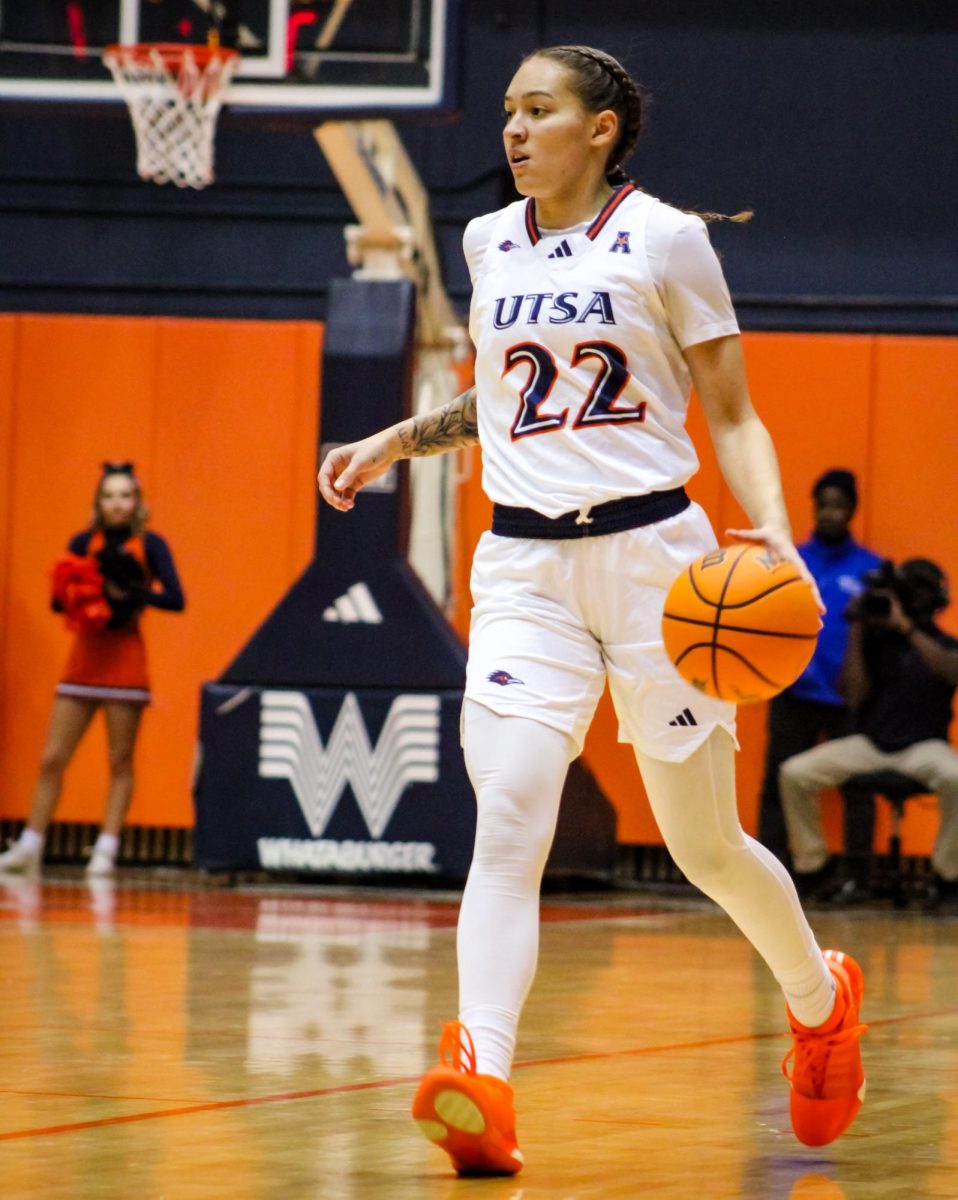The UTSA Roadrunners women’s basketball team has overcome many hurdles and demonstrated great resilience in their 2023–24 season. With a record of 10 wins and seven losses, they have shown noticeable improvements from their 13 wins and 19 losses last season, all while losing one of their most impactful players, Jordyn Jenkins, and moving to the tougher American Athletic Conference.
The Roadrunner’s season began on a challenging note with a 70-55 loss to Arizona State, setting a tone of adversity for the team. However, they soon found their rhythm, securing three consecutive wins against New Mexico State 58-55, Texas A&M-Corpus Christi in overtime 66-59 and UT Arlington 70-66. Other notable victories included a commanding 90-66 win over UTEP and a 75-64 triumph against Seattle University. However, tough losses, like against Oregon 61-48, or close defeats to teams like Texas Tech 63-58 and Houston 66-64, indicated areas for growth, particularly in maintaining consistency against more formidable opponents.
One of the season’s highlights was their recent 65-42 victory over the South Florida Bulls. This win demonstrated the team’s offensive and defensive capabilities, draining a season-high 11 3-pointers and holding USF to a miserable 21% from the field, reflecting the effective coaching and the players’ execution of game plans.
The reliance on their starting five is evident, with four starters averaging double digits in points. This dependency speaks to the strength of these players but also highlights a potential area of vulnerability — the need for depth and contribution from the bench. Players like Elyssa Coleman, Kyra White, Sidney Love and Aysia Proctor have been instrumental in leading the team’s offensive and defensive efforts. However, for sustained success, especially in a challenging conference, a more comprehensive team effort is essential.
Coach Karen Aston’s leadership has been pivotal this season. Her ability to adapt, foster teamwork and build resilience within the team has been a cornerstone of their success. Under her guidance, the team has shown significant improvement in ball movement, defensive solidity and mental toughness — essential qualities for competing at a higher level.
Looking forward, the key for UTSA is to maintain this momentum and continue building on its strengths while addressing the need for more bench contributions. The team’s reliance on its starters for scoring is a double-edged sword, capable of delivering victories but also posing risks if these players are neutralized. Emphasizing team depth and strategic adaptability will be crucial for their success in the remainder of the season and beyond.
This season, the UTSA women’s basketball team’s journey is one of overcoming challenges and embracing growth. Moving to the AAC has brought new challenges and opportunities to measure up against some of the better teams in college basketball. With a solid starting lineup and strategic coaching, the team has positioned itself as a strong competitor. As the season progresses, it will be interesting to see how they leverage their strengths and address areas for improvement in their pursuit of excellence.











